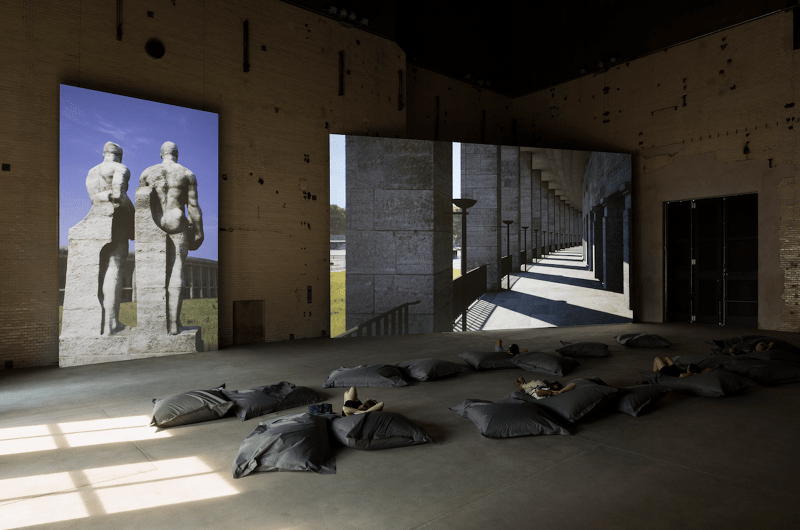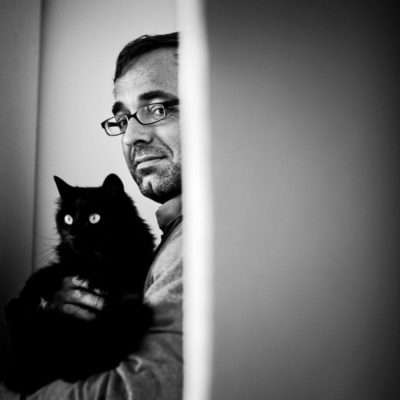DATES EXTENDED for David Claerbout. Olympia
— The real time disintegration into ruins of the Berlin Olympic stadium over the course of a thousand years
18 May 2017 — 14 January 2018

‘Olympia’ is a monumental double screen projection depicting the decaying into ruins of the Berlin Olympic stadium in real time, by nature's influences alone.
The project will run day and night, year in, year out, undergoing exactly the same natural and weather conditions that Berlin is undergoing (those are downloaded in realtime)
It is an extremely slow form of revenge on the thought of EMPIRE, and the architecture to illustrate its power, ironically, the stadium was also built in a hurry, which makes it fall prey to simple weather conditions rather rapidly.
The point is that the spectator who is observing the projections will be able to connect his or her own act of looking (and seeing no significant event) to what is really grand and stands like an empire: time.
Meanwhile, it has to be said that the architects conceived it as a 3 dimensional photo-postcard. a building who’s function was not to impress, but to overwhelm and to overpower, which makes it utterly theatrical.This makes it a striking composition from any angle.
There, the virtual photography will ‘collaborate’ with the mechanics of power.
The horizontal projection is an elliptical camera movement around the main arena, while the second (a vertical projection) picks out the details, again in realtime.
The Museu Nacional d’Art de Catalunya and the Olympic Stadium
The Museu Nacional d’Art de Catalunya is located in the Palau Nacional of Montjuïc, constructed for the International Exposition of 1929. In 1934 it opened its doors as the Museu d’Art de Catalunya, bringing together the medieval collection.
Subsequently, in 1995, then as the Museu Nacional d’Art de Catalunya, the new rooms of Romanesque art were inaugurated, and in a successive way the public presentation of the collection was extended, a process that ended in 2004 with the integration of modern art.
In the area around the Museu Nacional d’Art de Catalunya site, many of the buildings erected for the 1929 International Exhibition remain.
In the same area when the museum is placed, the Olympic Stadium was opened on 20 May 1929 for the Barcelona Universal Exposition. The second-largest stadium in the world at the time, it was designed for the 1936 Olympic Games, but due to the political situation of the time they never took place there and the stadium fell into disuse.
Half a century later, as a result of Barcelona’s bid to host the Olympics, the stadium came back to life. In 1985 work began to completely remodel the stadium, adding facilities and services necessary to host an Olympic Games. The entire stadium underwent remodelling, except the facade, the original of which was conserved.
Related pages
